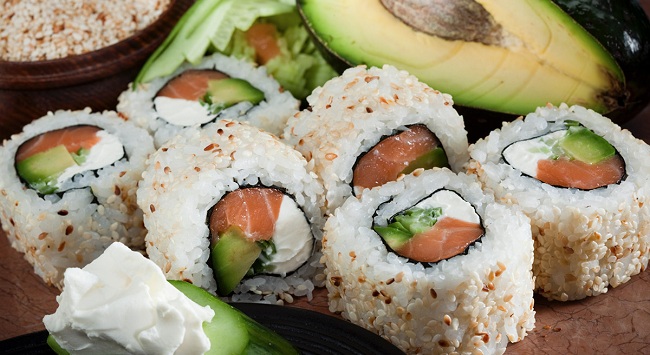Only professionals who have perfected their skills for years can tell about the secrets of making perfect sushi. Just cook rice and just chop fresh fish? Not so simple! We got first-hand information about the little tricks – talking with an expert of a Japanese restaurant chain.

- Buy regular white rice and you’ll never boil it to perfection. You need round grain or special Japanese rice. Fish also has its own subtleties. With the one that lies on the ice in the supermarket, you can never be sure that its shelf life has not expired or is not close to that. In addition, such fish are often weathered and hygiene suffers. We recommend taking fish fillets in a vacuum, on which the production and expiration dates are stamped on the package, and not printed on a sticker – they are often re-glued.
- You can use a rice cooker, but a multicooker will do. Cook in the “Rice / cereal” mode for no more than 25 minutes. Do not stir the rice to avoid damaging its texture. The correct consistency of rice is not to leave it al dente, but also not to digest it. To make the rice easy to shape, it should be seasoned with a special dressing made from rice vinegar, salt, sugar and Kombu algae (you can do without algae, as this is already a “professional” level).
- It is very simple to clean fish fillets from bones: run your hand “against the grain” and you will feel where the bones are hidden. Tweezers are the best way to remove bones. It is necessary to cut fish fillets with a very (VERY!) Sharp knife against the fibers at an angle of about 45⁰. We never drank fish! Try to cut 1 piece at a time (for which, in fact, we need a very sharp knife). Remember – it is extremely important not to damage the fiber structure so that the fish pieces do not fall apart.
- There is a concentrated soy sauce, which must be diluted with boiled water before use, and there is a ready-to-use one. Pay attention to the label. Check the composition – there are only 4 (!) Ingredients in an authentic soy sauce: soybeans, salt, wheat and water. Keep in mind that in glass containers the sauce will last longer than in plastic containers. The stores sell dry wasabi powder, which turns into a sauce we are used to when mixed with boiled water at room temperature. Choose the consistency of the sauce to taste: the more water, the more liquid and less spicy the sauce will be. Do not mix wasabi with soy sauce in the same container. The Japanese do not do this, and they certainly do not soak the whole sushi in this solution, because the rice will become too salty and crumble right in the gravy boat. Sushi should be dipped in soy sauce from the side of the fish, and a little wasabi should be applied directly to the slice you are going to put in your mouth.
- Going the simplest way and getting by with ordinary processed cheese will not work – it does not suit the taste of nori, fish or seafood at all. The most suitable option is, of course, Philadelphia cheese. But there are also more budgetary, but no less tasty and suitable options – Buko and Almette cheese. As a last resort, you can add Viola or Feta cheese, but the taste of such rolls will be noticeably different from what we are used to eating in specialized restaurants.
